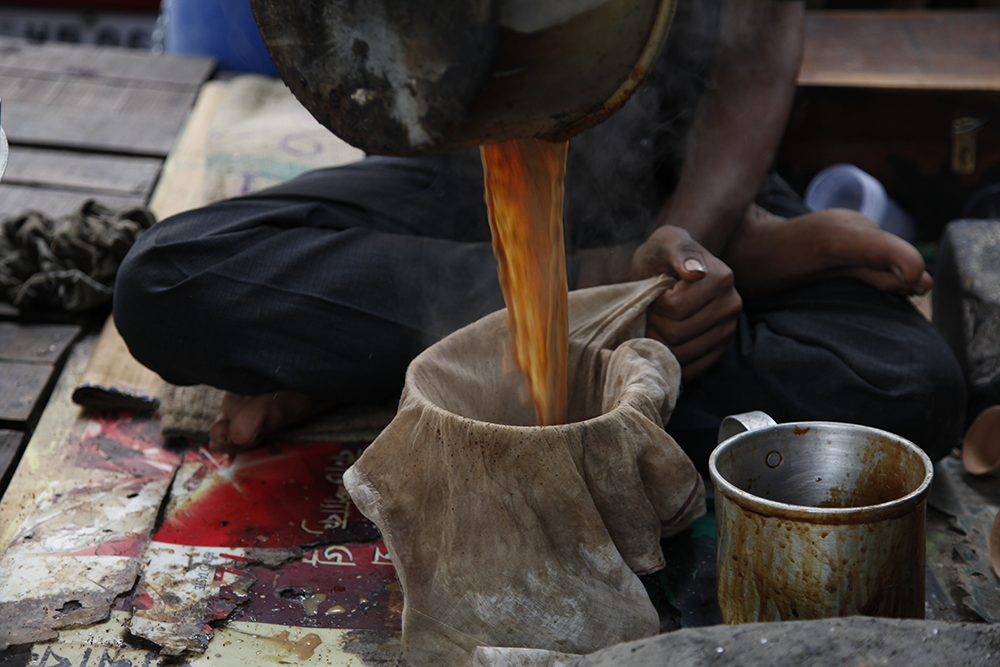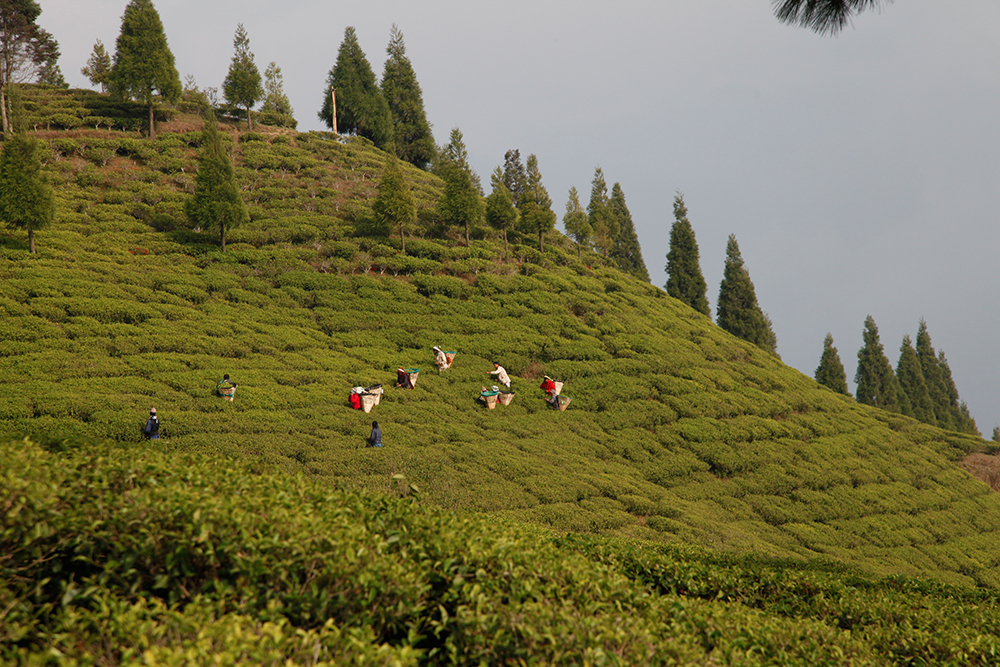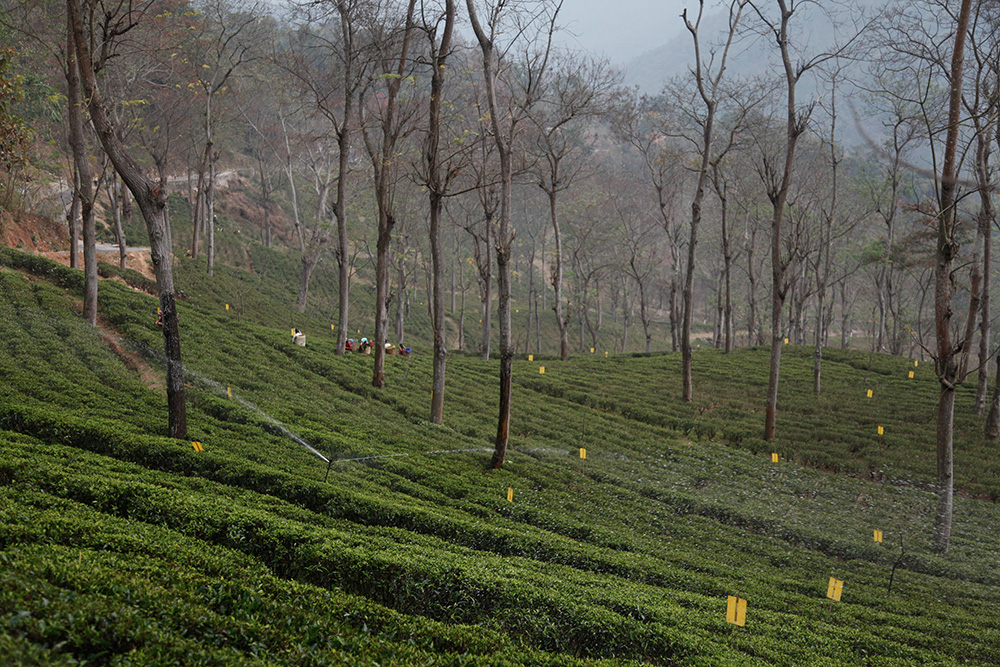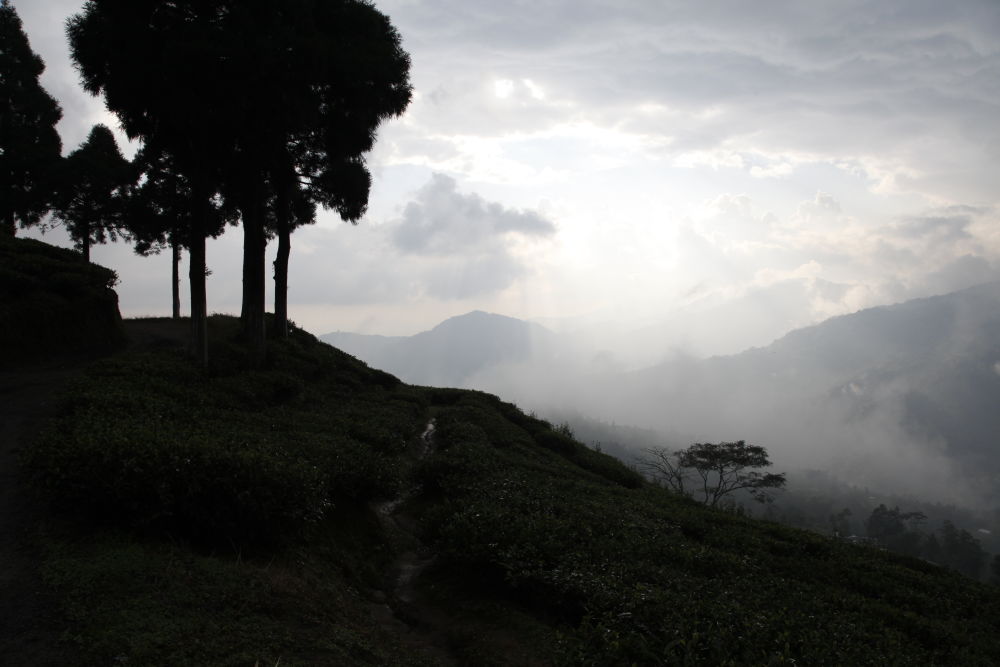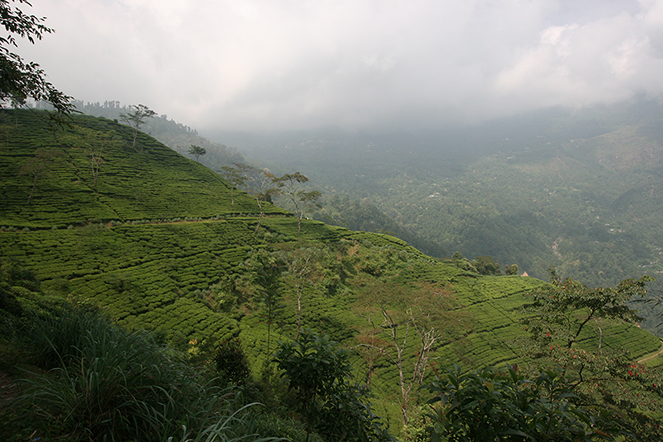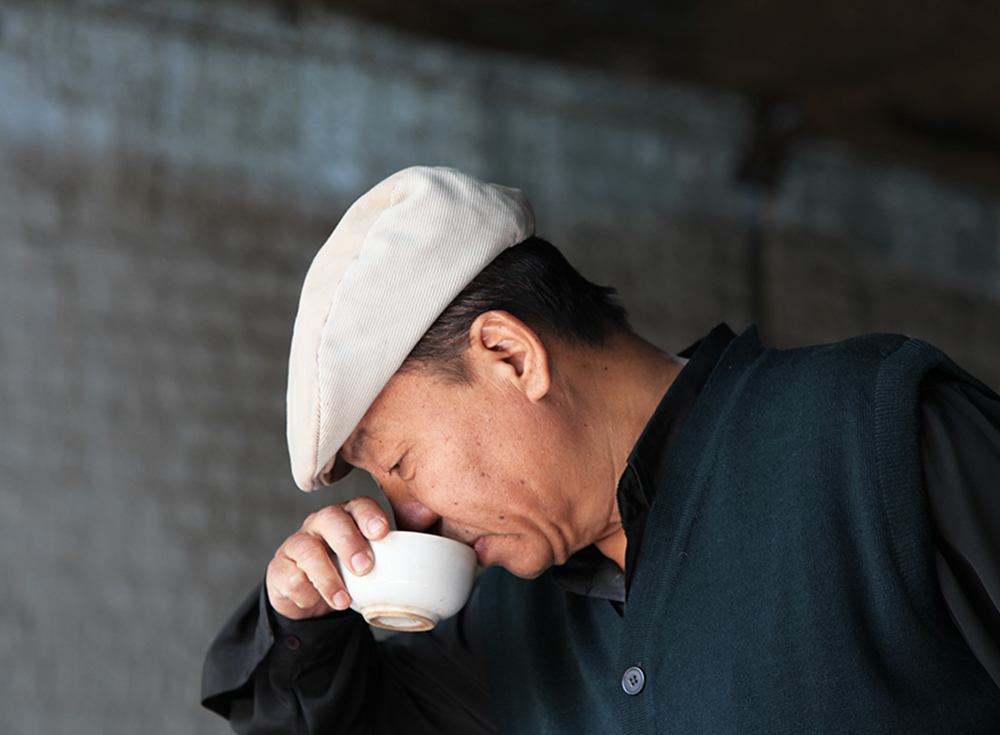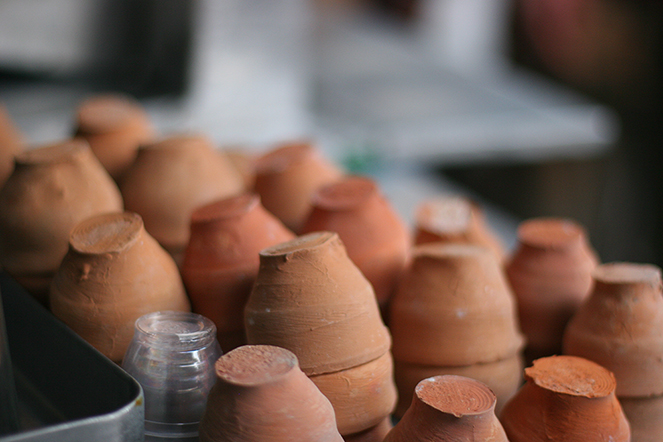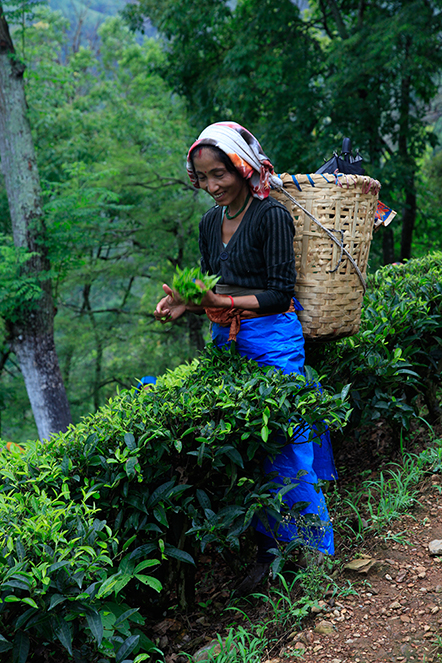You know how they are, tea drinkers – they can be obsessive. They save a special teapot for a particular tea, they infuse some teas for exactly three minutes and 45 seconds in water at 85°C, others for just two minutes in water at a maximum temperature of 60°C.
So this photo I took in Kolkata makes me smile. Firstly, because I really enjoy drinking chai when I’m in India. Secondly, because all the tea-drinker’s principles have gone out of the window here. This chai wallah boils up his water, puts milk in his tea, adds a load of spices and works in basic conditions, seated on a scrap of cardboard placed on the pavement, without fanfare. And that’s what tea is about, too: simply made, with care, and an absolutely delicious drink in a cup. Chai is great!

